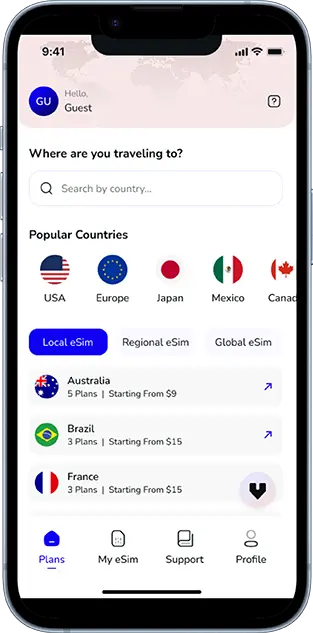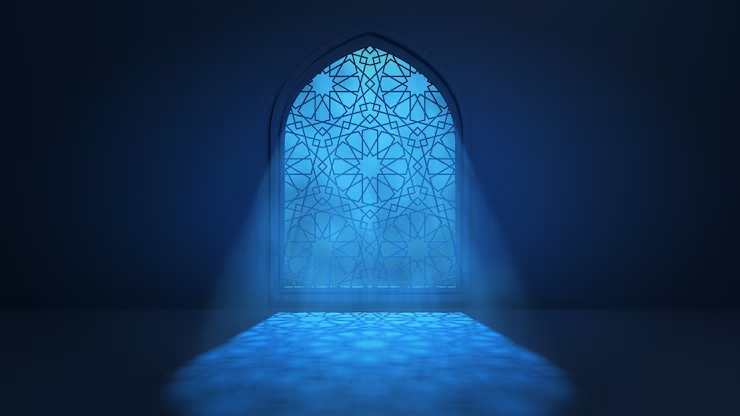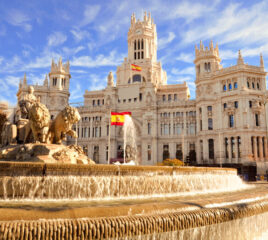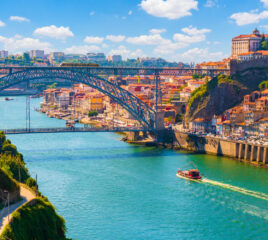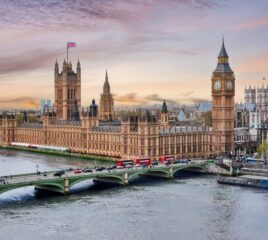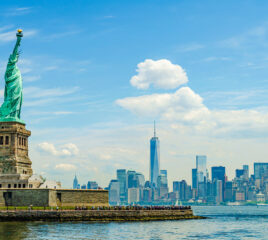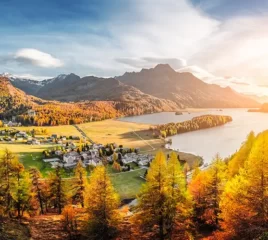Note that iPhone devices from Mainland China aren’t eSIM compatible. Also iPhone devices from Hong Kong and Macao aren’t compatible (except for iPhone 13 Mini, iPhone 12 Mini, iPhone SE 2020 and iPhone XS)
Mecca stands as a beacon of Islamic devotion, its spiritual significance resonating globally with Muslims who dream of visiting at least once in their lives. Most know Mecca as the epicenter of the Hajj pilgrimage, but what many overlook is that the Holy City offers a deeply enriching experience throughout the year. Whether you’re visiting for Umrah, seeking spiritual clarity, or discovering the cultural layers of Islamic heritage, Mecca offers more than just a seasonal ritual.
Outside the peak pilgrimage season, Mecca transforms into a tranquil spiritual retreat with reduced crowds, serene mosque visits, and opportunities to dive deep into Islamic history and tradition at a more personal pace. This is a guide to uncover Mecca beyond Hajj — as a year-round destination for reflection, heritage, and connection.
Significance of Visiting Mecca Year-Round
While Hajj occurs once annually during Dhul-Hijjah, Muslims can embark on Umrah or visit the city for spiritual and cultural exploration at any point during the year. Outside the intense days of Hajj, Mecca becomes a sanctuary for contemplation — a place where visitors can engage with their faith more peacefully, take their time with rituals, and absorb the historical beauty that surrounds the city.
Many choose to visit during the cooler months from January to March or between Hajj and Ramadan when the city is less crowded and the climate more forgiving. These off-peak months offer affordability, easy accommodation, and less congestion around holy sites — especially the Grand Mosque, Masjid al-Haram.
Embracing Umrah: A Flexible Pilgrimage Option
Umrah, unlike Hajj, can be performed at any time of the year and is shorter and less physically demanding. This makes it ideal for the elderly, families, or those unable to secure a Hajj permit. Despite being the “lesser” pilgrimage, Umrah holds immense spiritual value. The core components — entering Ihram, performing Tawaf around the Kaaba, walking between Safa and Marwah (Sa’i), and concluding with Halq or Taqsir (hair cutting) — remain deeply symbolic acts of devotion.
With fewer pilgrims crowding the Haram during off-season months, visitors can take their time performing these rites, offering prayers close to the Kaaba, or even peacefully sitting in quiet reflection around the sacred mosque. For many, this creates a more meaningful connection to their faith and surroundings.
Stay Connected on Your Journey to Mecca
Enjoy seamless internet, prayer app access, and real-time updates.
Spiritual Landmarks That Resonate All Year
While Masjid al-Haram is undoubtedly the central focus for visitors, Mecca is home to numerous spiritual and historical sites that deserve exploration. The sense of sacredness doesn’t end at the Kaaba.
Jabal al-Nour, the mountain where Prophet Muhammad received the first revelations of the Quran, is a challenging yet rewarding climb. At its peak lies the Cave of Hira, visited by pilgrims seeking solitude and connection to this pivotal moment in Islamic history.
Another sacred mountain is Jabal Thawr, where the Prophet and Abu Bakr took refuge during the migration to Medina. Visiting this site offers both historical insight and a reflective journey through Mecca’s prophetic legacy.
Within walking distance of Masjid al-Haram lies Maqam Ibrahim, believed to bear the footprint of Prophet Abraham. Here, prayers are often offered after completing Tawaf, and visiting during the off-season means less waiting time and a calmer atmosphere.
Discovering Historical Depth and Cultural Layers
Beyond religious rituals, Mecca is a city layered with Islamic history and tradition. One such place is Jannat al-Mu’alla, the resting place of several members of the Prophet Muhammad’s family. Walking through this ancient cemetery, one gains an appreciation for the early days of Islam and the sacrifices made by those who shaped its foundations.
The Makkah Museum (also known as the Exhibition of the Two Holy Mosques Architecture) offers an immersive look into Mecca’s architectural and religious evolution, showcasing ancient Qurans, Kaaba models, and historical artifacts that trace the city’s transformation over centuries.
Traditional Saudi Arabian life is preserved in the local souqs (markets). At places like Souq Al-Otaiba, visitors can shop for prayer beads, perfumes, abayas, Islamic literature, and souvenirs while experiencing authentic street culture. These markets are not just for shopping — they’re hubs of social interaction, language, and living tradition.
Savoring the Flavors of Mecca
Mecca’s culinary landscape reflects both traditional Hijazi flavors and the diversity of pilgrims who visit. From local street stalls to luxury hotel restaurants, food is an integral part of the cultural experience.
One of the most beloved local dishes is Mandi — a fragrant rice and meat dish often served with tender lamb or chicken. Also popular is Mutabbaq, a crispy stuffed pancake usually filled with vegetables or meat. Sweet lovers will enjoy Kunafa, a dessert made of vermicelli soaked in sugar syrup, cheese, and pistachio.
For quick meals, many visitors seek out Al Baik, Saudi Arabia’s famous fried chicken chain. Other local favorites include Tazaj (grilled chicken) and eateries offering shawarma, falafel, and samosas, especially popular during Ramadan.
The hospitality in Mecca’s food culture is unmatched. Most restaurants are open late into the night, and many offer Zamzam water with meals — a sacred touch that highlights the spiritual fabric even within daily life.
Optimal Seasons for Visiting Mecca
While Mecca is a year-round city, certain months make for more comfortable visits. The cooler months from January to March offer mild weather and reduced congestion. Visitors during this period can perform Umrah with ease, take their time at sacred sites, and explore the city without the stress of heat or heavy crowds.
Ramadan, though busy, is also a powerful time to visit. The energy during Taraweeh prayers in Masjid al-Haram is electric, with communal iftars and intense devotion transforming the city’s spiritual rhythm. It’s ideal for those seeking an immersive spiritual atmosphere.
On the contrary, Dhul-Hijjah, the Hajj month, should be avoided unless one is performing Hajj, as accommodation prices surge and crowding becomes intense.
Where to Stay: Comfort for Every Kind of Traveler
Mecca offers a wide range of accommodations, from luxurious high-rise hotels overlooking the Haram to affordable lodgings a few streets away. For travelers wanting a seamless experience, booking hotels near Ajyad Street or King Abdul Aziz Gate is ideal due to their proximity to Masjid al-Haram.
Top luxury hotels include:
- Fairmont Makkah Clock Royal Tower
- Raffles Makkah Palace
- Swissôtel Al Maqam
These hotels often offer rooms with Kaaba views, private prayer halls, and quick access to shopping malls and restaurants.
For those on a budget, options like Al Kiswah Towers, Al Massa Hotel, or budget-friendly Airbnbs are increasingly available. Shuttle services to Haram are common, and many hotels include suhoor and iftar buffets during Ramadan.
Staying Connected with eSIM
In a city as connected as Mecca, digital access plays a vital role in travel convenience. Whether it’s booking ride-hailing services, finding your hotel, or accessing prayer times and directions, staying online is essential — especially for international travelers.
Using a digital eSIM for Saudi Arabia allows you to skip expensive roaming fees and long queues for SIM cards. Services like Voye Global offer instant activation, enabling you to access local high-speed data the moment you land.
An eSIM also ensures seamless connection for:
- Navigation via Google Maps
- Streaming religious content or lectures
- Real-time prayer time updates
- Staying in touch with family and group members
- Translation apps or Du’a guides
It’s a smart, affordable way to stay connected in Mecca, particularly for spiritual travelers who rely on mobile tools for a smooth pilgrimage or cultural journey.
Packing Smart for a Spiritual Journey
Packing for Mecca varies depending on the season, but some essentials remain constant. Modesty is key — both in dress and behavior.
Essentials to pack include:
- Ihram garments (for men) and loose abayas/hijabs (for women)
- Comfortable sandals or walking shoes
- A small prayer mat
- Fragrance-free toiletries (required during Ihram)
- A water bottle (Mecca’s climate can be dry)
- Power bank and mobile charger
- eSIM QR code or activation details for connectivity
- Lightweight, breathable clothing
If visiting during winter, pack a light jacket or shawl for early morning and evening prayer times. In summer, prioritize sun protection — sunglasses, SPF, and umbrellas help beat the heat.
A Spiritual City That Never Sleeps
Mecca isn’t just a destination; it’s a spiritual presence that lives beyond time and season. Year-round, the city vibrates with the footsteps of seekers, the recitation of Qur’an echoing in the mosques, and the call to prayer anchoring every hour with sacred intention. Visiting outside the Hajj season reveals Mecca’s softer, quieter side — one that invites a deeper connection with God, a more intimate look at Islamic heritage, and the chance to explore the city without rushing.
This is Mecca beyond the pilgrimage. A place to reconnect, reflect, and renew. A journey that doesn’t require a season — only sincere intent.
Make Your Mecca Trip Easier
Skip SIM card lines. Connect instantly. Travel spiritually and smartly.
Seamless Mobile Data Everywhere
